Spaced out in Salford
If the UK is to maintain its place in the space race, we’ll need a new generation of engineers. Meet the students on an unusual training course in Salford who might become the first people on Mars
In an era of Elon Musk’s rockets, Nasa’s aim of conducting the first manned mission to Mars in the early 2030s, and plans for the first luxury hotel to orbit the earth, it’s hard not to be excited about the future of human space travel. Themes of space colonisation have dominated sci-fi books and movies for as long as they’ve existed, with children and adults alike coming together to marvel over what might lie in wait across our solar system.
Australia has now recognised it’s no longer possible to ignore Earth’s inter-planetary possibilities, having recently allocated a £150 million budget to set up its own national space agency. China’s public and private space companies are making rapid strides to catch up with Russia and the US in developing rocket engines. But you only need to look as far as Salford to discover a set of young hopefuls working tirelessly to earn their place out in the galaxy.
At Pendleton Sixth Form College, a distinctive course is giving ambitious teens all the tools they need to (literally) reach for the stars, educating and inspiring a new generation of astronauts and engineers who hope to be amongst the first humans to step foot on Mars.
Designed by the National Space Academy, funded by the National Space Centre and the UK Space Agency, Pendleton College’s space engineering course combines A level maths and physics with BTEC level 3 engineering in a rare blend of science and technology.
The subject is taught in relation to all aspects of space science, including earth observation, cosmology, human space exploration, automated and robotic exploration, astronomy, and terrestrial applications of space technology.
Having launched first at Loughborough College in 2012, the course is still in its infancy and is so far taught nowhere else.
Chris Holgate, course leader at Pendleton, says: “The course was set up by the National Space Centre. So it was designed to give students the skills needed to go into aeronautical space engineering industries after college.
“The skills they identified as necessary were mathematical, numerical skills which we supply through the A Levels in physics and maths. We also deliver project management and other skills related to space industries through BTEC engineering. So space engineering is unique in that it’s a hybrid of the best skills of both.”
To discover what drives these Gen Zs out into the cosmos, we spoke to Charlotte Renshaw, Nathan Beckett and Tom Hodgins, three of Pendleton’s space engineering students, about what it means to train for an interstellar career.
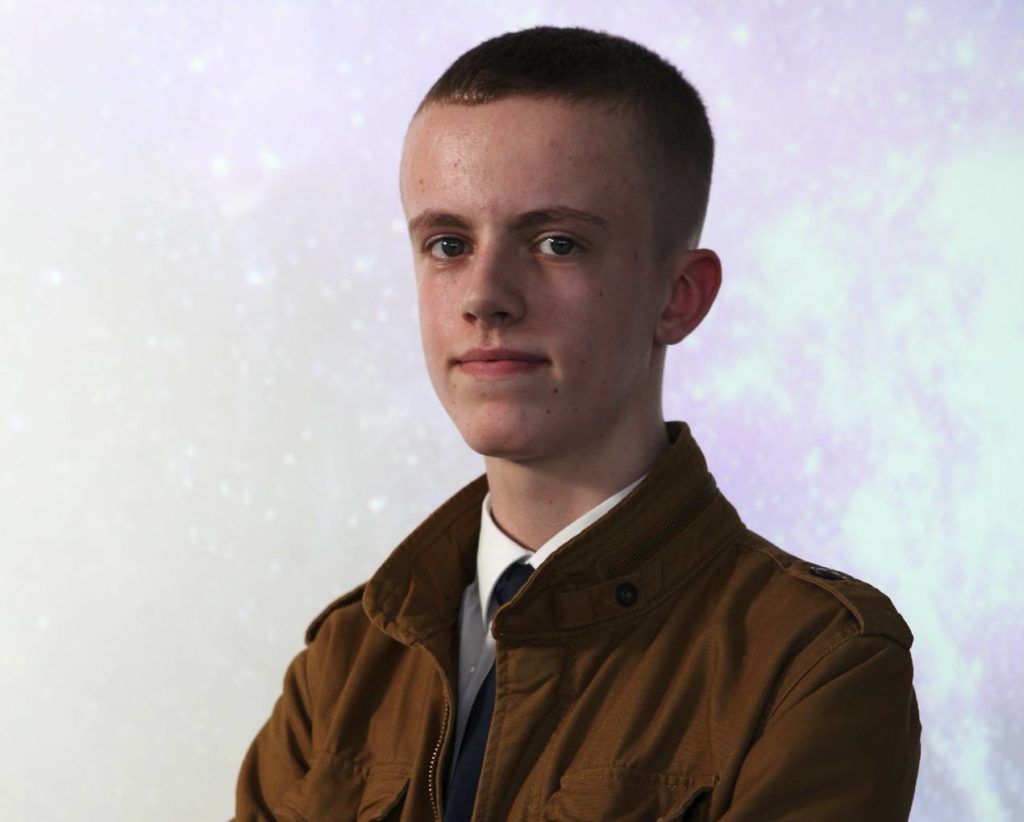
Having joined the Air Cadets during his early teenage years, Nathan Beckett is no stranger to flying. And as he steps on to the threshold of adulthood, his education is taking him higher than ever.
“Next year, we’ll be making our own prototype Mars Rover,” he says. “It’ll be tough because first you have to know the wind resistance on Mars or whatever planet or moon you want to go to, so you can build a parachute big enough to be able to slow it down so it won’t get destroyed on landing.”
There are many common misconceptions about science, technology, engineering and mathematics (STEM) courses. Beckett says too many kids are holding themselves back by presuming they’re not intelligent enough to give space-related subjects a try.
“People often think that you have to be really smart to do this,” he says. “But you don’t have to be the smartest person in the world to pursue a STEM subject. With this course, it requires two Bs so it’s not unreachable. Once you’re here, there are loads of external courses that help build skills in a science-related field, maths or whatever you want to do. There’s a ton of opportunities available that don’t require being really smart, and they all mean you can push for a good job to do with STEM.”
So what type of job does that mean for Beckett? Instead of becoming an astronaut, he says his passion steers him more towards the engineering side of space travel.
“I’d love to work in designing rockets. It would be a really hard job, but I love the challenges that would bring.
“I’ve definitely considered trying to become an astronaut but, to be honest it hasn’t appealed to me as much as engineering has. I’d rather oversee the behind-the-scenes of space travel than anything else. Thankfully, this course is perfect to help anyone who wants to pursue either side of what it means to go into space.”
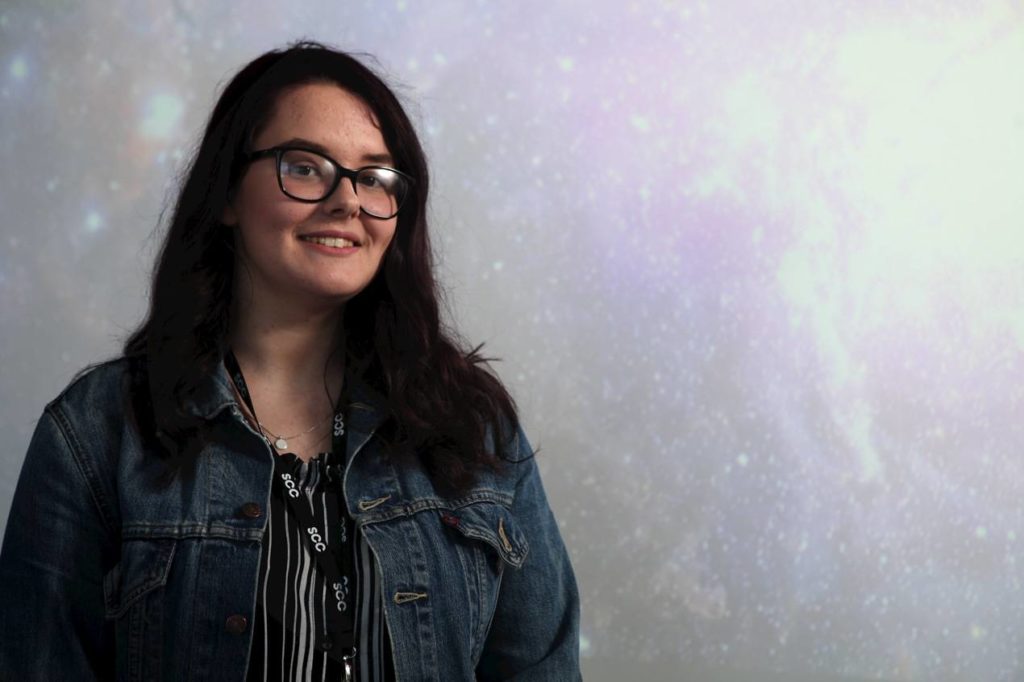
Having first discovered her passion for science and technology at the age of four after spending a day at an F1 racecourse with her dad, Charlotte Renshaw never thought a course dedicated to space would be an option for her. But after some research online, she says she’s finally found her calling in space engineering.
“When I was at high school, I didn’t really know what direction to go in for my A levels,” she says. “I knew I wanted to move into something science-based because I love it, but I didn’t know a course specifically about space would be available for college students. I was shocked and excited when I finally found out about this course.
“Classes are really interesting. Each session is different, so you never know what you’re walking into. For example, we’ve recently been doing a lot of work on electronics because next year we’ll be building a robot. I like all the work that involves streamlining too; it’s the same theory that you apply to rockets.”
As one of the few young women on the course, Renshaw feels compelled to address the gender imbalance that science and tech industries have been renowned for. She questions whether enough teenage girls are open to space-related courses at the age of 16.
“There are plenty of opportunities for girls like me who want to learn about space – I just think more girls need to be aware of what’s available. I know a lot of girls who all want to move into the same sorts of courses and never do anything differently. There’s nothing wrong with anyone who wants to do that, but I think they should think outside the box more. I always wanted to do something different… then as soon as I started this course I realised it was definitely for me. So there are opportunities there, but maybe they’re not advertised in the way they should be.”
On humanity’s first endeavour to set foot on Mars, her fervour for the universe shines through. “Everything lying out there in space is all so new to us, so there are problems there that nobody has ever faced before. To become an actual part of that would be so interesting. It would definitely be something for the history books.”
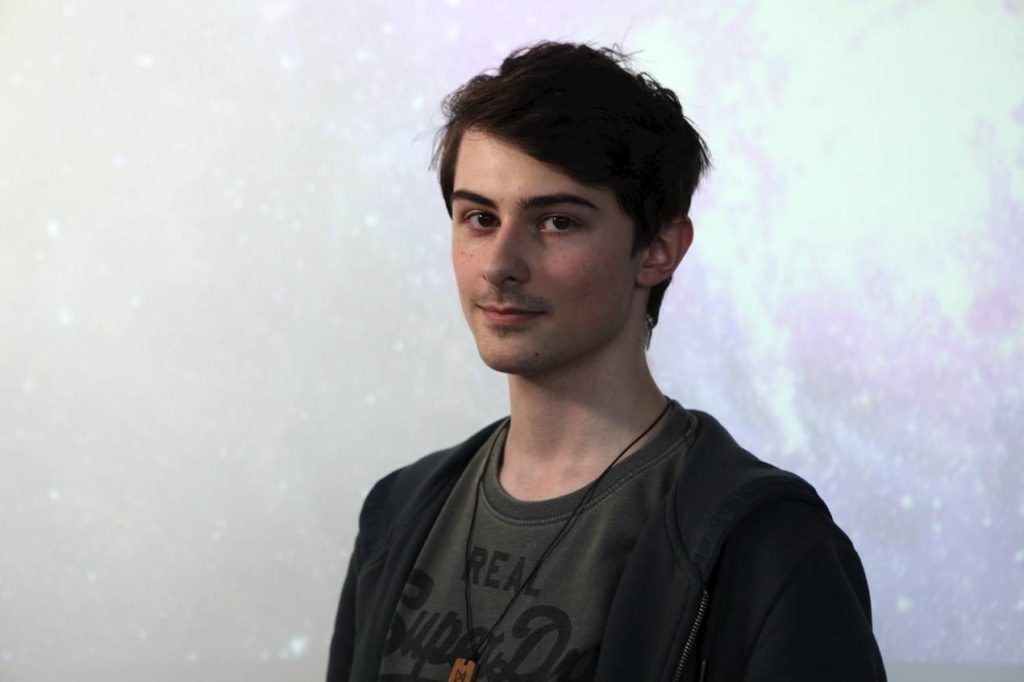
Exploring the endless facets of space travel is exactly what Tom Hodgins dreams of. As an aspiring astrophysicist, he pictures a life dedicated to futurism, an academic pursuit that brings science and trend analysis together in order to predict how society will develop.
“I want to work to preserve the future,” he says. “People think scientists and engineers go into these fields just because we find it interesting, which is true, but there’s more to it than that. It’s not about sending random objects into space unnecessarily; it’s more about an artful blend of passion and wanting to use that passion for the greater good. I don’t think there’s many people like me that do their day-to-day work without thinking ‘How is this going to help people?’ first.
“That’s why I think more kids should be engaging with space. Space is who we are and what we are. I think it should be seen as a path to enlightenment, whether that’s about the general world or the self.”
With such distinct hopes for the future, does that mean he sees himself as part of the first team to land on Mars?
“It would be an honour to work on the first human expedition to Mars,” he continues. “My outlook on the human race is we either go extinct or we traverse the galaxy. If the latter scenario happens, then how momentous would it be to work on the first project to travel to the first other planet? That would be the moment we become an inter-planetary species! I think that’s monumental.
“We need to have optimism for the future. Pessimism will always exist but optimism is the only thing that moves us forward, and we have to work hard for that. Being optimistic helps people progress. And if you don’t have hopes for the future, then how could you hope to work towards it?”
Photos: Jason Lock
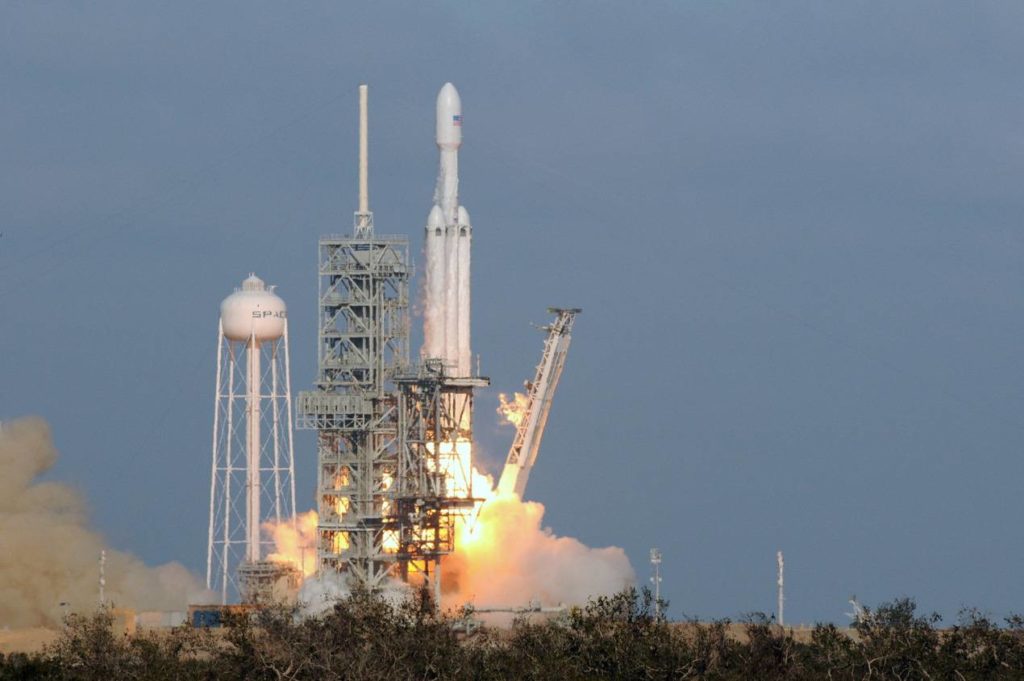
Small is beautiful for the UK space industry. Gone are the Cold War days when launching satellites required superpower budgets. Now small satellites – weighing less than 500kg – come in at tens of thousands of pounds and if the UK is to maintain its space industry edge it’s going to need not only more of them but somewhere closer to home to launch them than New Mexico.
Satellites are used for everything from navigation systems such as GPS to telecoms, weather forecasting and earth observation. There are around 1,700 currently orbiting the earth. The UK space sector is a world leader, with 7 per cent of the global market and a particular strength in satellite manufacturing. But until now British companies wanting to launch satellites have had to use overseas facilities, such as the Foster + Partners-designed Spaceport America in the US desert.
The Space Industry Act, which came into force in March, aims to change all that and pave the way for the first commercial space launches in the UK. None of the eight identified potential sites for the country’s first spaceport are in the north and the industry is clustered in the South East, but the government insists the country as a whole will benefit from the push to add to the 38,000 jobs it currently supports.
“The Space Industry Act will provide the legislative framework to offer the UK’s world-leading small satellite companies new opportunities for competitive, reliable access to space on their doorstep, closing the gap in the UK space value chain,” says Graham Turnock, chief executive of the UK Space Agency, which was set up in 2010. “It will also support the creation of new opportunities for the UK’s scientific community to carry out cutting edge research in microgravity by enabling them to launch to the edge of space from UK soil.”
Turnock says there is some industry growth outside the South East and that Scotland accounts for 18 per cent of jobs in the sector despite making up less than 9 per cent of the population. “Glasgow has built more satellites than any other city in Europe over the past two years.”
He adds that new business incubators and centres of excellence, including one for the North East in Durham, help space companies find finance and information for new or improved products.
Christopher Newman, professor of space law and policy at Northumbria University, says the Space Industry Act is significant because it is the first legislation to equip the UK to deal with the challenges of the new small satellite market. But it remains a competitive one.
“The UK isn’t the only one in the game,” he says. “Look at America with private companies like Space X and Blue Origin – private companies looking to pioneer who’ve spent a lot of money on bringing the cost of launch flights down.
There’s also the consortium Arianespace, for the European Space Agency. So you’ve got a lot of different players in this game.”
Brexit too could put a spanner in the propellant engine. Last month the government said it wanted continued access to the EU’s Galileo project, the satellite global positioning system that provides security and defence data, after Brexit. The UK played a major part in developing the system but signed off on rules preventing access to the data for non-EU countries so it was hardly surprising that Brussels’ negotiators said no.
But Turnock insists Brexit will not hinder the UK space industry. “I’m confident in the future of the UK space sector and our work with international partners as part of the European Space Agency will continue, as it is a separate entity to the EU. We talk regularly to industry and listen to their concerns, and the government has been clear it wants to remain in important projects.
“We’re also seeing UK firms attract significant investments from countries outside of Europe. A good example of this is the recent news that Boeing is investing in Oxfordshire-based Reaction Engines as they develop their revolutionary hybrid rocket and jet engine. So there are lots of opportunities already out there and many more to come with our Launch UK programme and the government’s industrial strategy.”
Newman is more sceptical. “Brexit is going to cause a problem, as there’s a lot of business we’re maybe losing if we lose access to the European market, which we still don’t know. That uncertainty is inevitably going to hamper investment.”
Newman is contributing to consultation on the act that will inform secondary legislation to fill in gaps, such as on insurance and liability for the industry. But he says national legislation like this is all the more important now not only for the interests of local industries but the world at large, because there is little global appetite to update the Outer Space Treaty 1967, which didn’t foresee the possibility of rows over the rights to mine asteroids for minerals, nor who ought to clear up space debris.
China’s rogue space station Tiangong-1, which crashed through the atmosphere and broke up in April after being out of control for two years, highlights the clutter up there. The US Space Surveillance Network is currently tracking 23,000 objects larger than 5-10cm in diameter, ranging from spent rocket sections to entire redundant satellites and bits that have fallen off them, most of them in near space.
Newman says: “There is a great environmental crisis in low earth orbit and a need for collective action. Whilst I don’t think there is enough environmental protection in the Space Industry Act, I don’t think the UK government is alone on this. The governments of the big space nations like China, America and Russia need to take the lead on this because at the moment we are sleepwalking into an environmental low orbit crisis.”
Additional reporting: Owen Healy
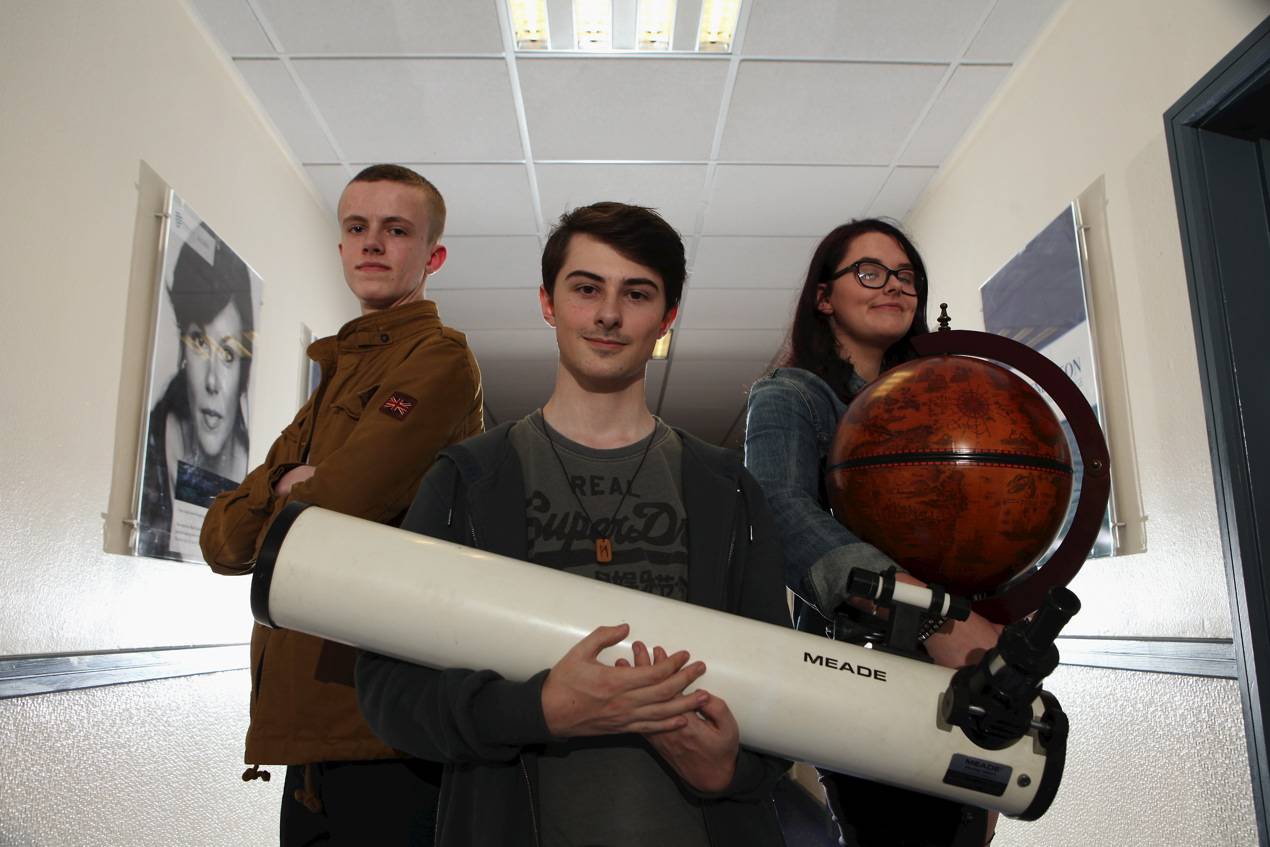
Leave a reply
Your email address will not be published.